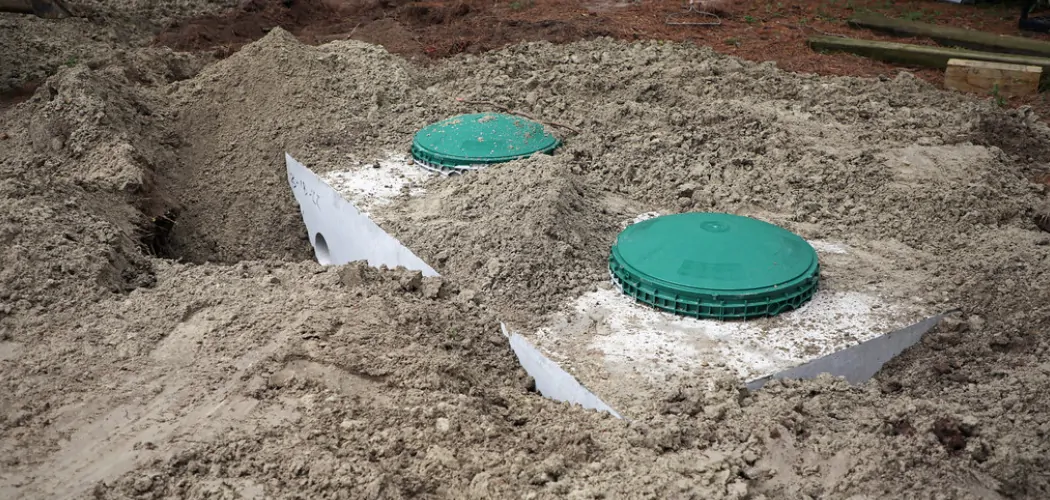If you have an outdoor septic tank, then it is important to know to hide a septic tank lid. This can help keep your yard neat and tidy and protect the system from any potential vandalism or other hazards. Hiding the lid can also make it harder for people or animals to accidentally fall into the tank, which could have serious consequences.

There are many advantages to hiding a septic tank lid. First, it can help keep your yard looking neat and tidy since the lid is out of sight. Additionally, you won’t have to worry about kids or pets accidentally falling into the tank if the lid is properly camouflaged.
Hiding the septic tank lid also adds a layer of security, as it makes it difficult for vandals or other intruders to access the tank. In this blog post, You will learn how to hide a septic tank lid in detail.
Step by Step Processes for How to Hide a Septic Tank Lid
Step 1: Inspect the Lid
Before attempting to hide a septic tank lid, inspect it first. Make sure that the lid is not cracked or broken and is securely fitted in its place. If there are any signs of damage, repair or replace the lid before proceeding.
Step 2: Choose Your Covering Material
Choose from a variety of materials, such as artificial turf, rocks, soil, tile, or pavers to cover the lid. Ensure that whatever you choose is heavy enough and won’t be moved by animals or other elements easily.
Step 3: Measure the Area
Take measurements of the area you plan on covering so you can accurately estimate how much material will be needed for the job. Use a shovel to dig up soil around the lid, giving it enough space for your covering material. Ensure you are digging deep enough that your covering material won’t be visible when placed on top.
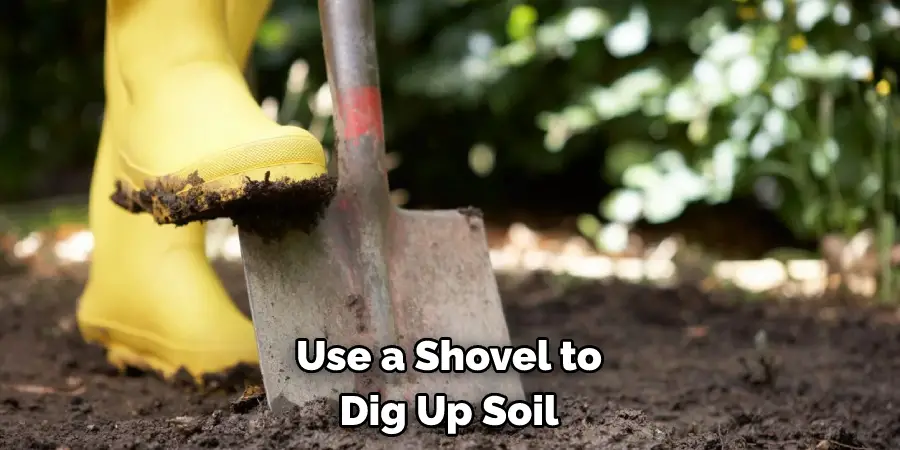
Step 4: Lay Down Thick Plastic Sheet
Cover the area with a thick plastic sheet to create a layer of protection between the lid and the soil. This will also help keep moisture away from the lid, which can cause corrosion over time. Spread an even layer of gravel over the plastic sheet. This is to help with drainage in the area so that water won’t collect around the lid.
Step 5: Lay Down Your Covering Material
Place your chosen covering material over the area and ensure it is evenly spread out. Make sure there are no gaps between pieces of turf or rocks so the lid isn’t visible. Install edging around the area to help keep the covering material in place and prevent it from shifting. Use bricks or stones to create a border that will hold the turf or rocks in place.
Step 6: Fill In with Soil and Pack Down
Once your chosen covering material is laid, fill in around it with more soil and pack down. To finish the job, add some decorative elements such as plants or stones to complete the area and hide the septic tank lid from view.
By following these steps, you can easily and effectively hide a septic tank lid. The key is to choose a covering material that is heavy enough and won’t be easily moved by animals or other elements.
Precautions for How to Hide a Septic Tank Lid
- Always use caution when working around a septic tank lid, as it could contain hazardous materials, such as sewage and other contaminants.
- Ensure that the area surrounding the lid is clear of any debris or obstructions. This will help ensure safe access to the lid for maintenance and repair purposes.
- Wear protective clothing, including gloves and goggles, when handling the lid.
- Check for any signs of damage or corrosion on the lid before attempting to hide it. If there is any visible damage, do not attempt to hide the lid until a professional has completed the repair.
- Place a large piece of plywood over the opening of the septic tank lid before burying it. This will prevent the lid from being damaged by heavy equipment or tools during the hide-and-seek process.
- Cover the lid with a layer of soil, rocks, or gravel to help camouflage it and blend in with its surroundings.
- Place a marker nearby that indicates where the septic tank lid is located. This will help avoid any future accidents or mishaps.
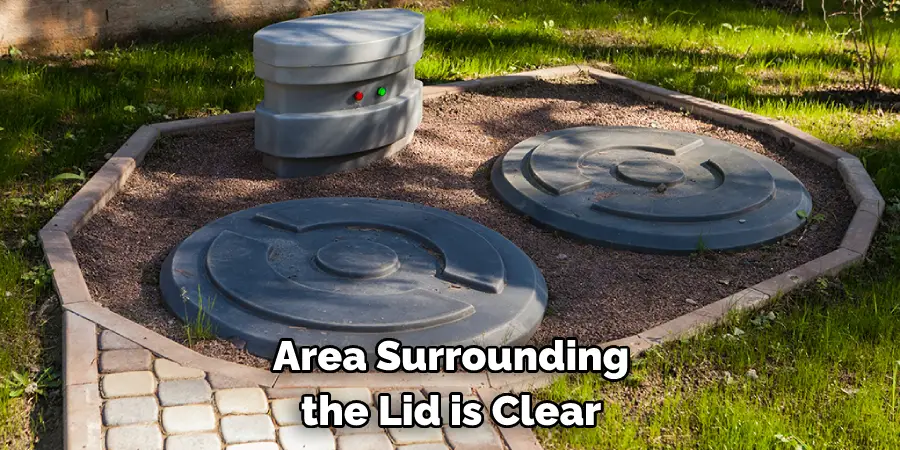
By taking the proper precautions and using caution when hiding a septic tank lid, you can keep your family, pets, and property safe from potential hazards associated with it.
Are There Any Special Considerations for Hiding a Septic Tank Lid in a Public Space?
If you’re hiding a septic tank lid in a public space, some special considerations should be considered. First and foremost, it’s important to ensure that the lid is securely attached to the surrounding area to avoid any safety hazards. Additionally, if the lid is located near any sort of walkway, it’s important to make sure that the lid is clearly marked with a sign or other warning so that people won’t trip over it.
It’s also important to ensure that the surrounding area is properly maintained, as any debris or rubbish can detract from the aesthetic appeal of hiding the septic tank lid. It’s also important to consider local laws and regulations, as some areas may have specific requirements when it comes to hiding septic tank lids in public spaces. Finally, it’s important to ensure that the lid is properly sealed against the elements so as not to cause any damage or contamination of nearby water sources. This can be done using a high-quality sealant designed for this purpose.
How Long Should You Expect the Project to Take?
The time it takes to hide a septic tank lid will vary depending on the materials you use and your experience with DIY projects. With an experienced hand, this project could be done in as little as two hours. However, for someone new to DIY projects or with limited knowledge about working with certain materials, the project could take more than four hours.
No matter your experience, the most important part of this project is to be patient and work slowly. Take your time to make sure that everything is installed correctly and securely. That way, your new septic tank lid will stay hidden for years to come! The best DIY projects are those that take care and accuracy, not speed.
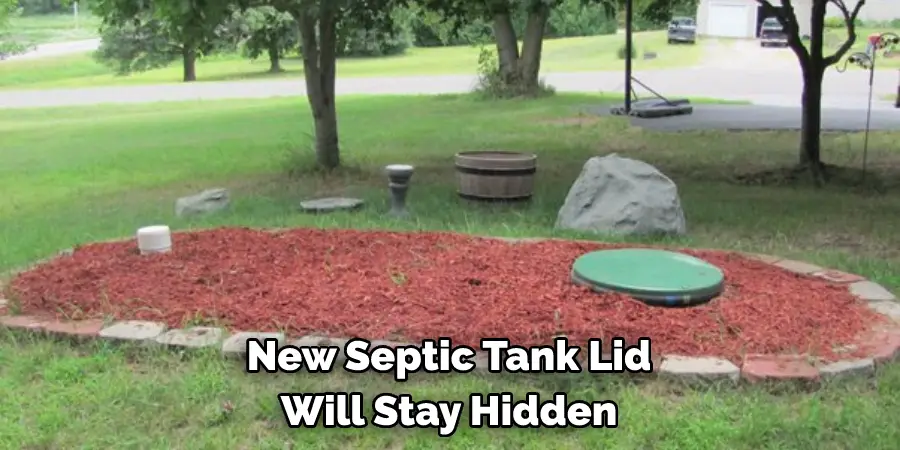
Are There Any Maintenance Considerations When It Comes to Hiding a Septic Tank Lid?
Hiding a septic tank lid is not only a matter of aesthetics but can also be important for safety and maintenance considerations. For example, if the septic tank lid is exposed in your yard, it could become a tripping hazard or allow access to curious children or animals. Additionally, covering the lid can help protect the tank from the elements, reducing the need for maintenance or repairs.
One of the most important maintenance considerations when it comes to hiding a septic tank lid is to ensure you can still access the tank easily. If you have placed a heavy object over the lid, such as a boulder, make sure you can move it with ease if you need to access the septic tank.
You should also check that all of your covering materials are securely in place to prevent any accidental openings or blockages that could lead to expensive maintenance and repairs being needed.
What Are the Risks of Not Properly Hiding a Septic Tank Lid?
Failing to conceal a septic tank lid properly can pose numerous risks. An exposed lid leaves your property vulnerable to theft or vandalism and potential damage from weather and animals. Unsecured lids can also lead to hazardous conditions for those living near the buried tank.
Children may be curious about what is in the tank and, out of a misplaced sense of exploration, might try to open or remove the lid. This poses an extreme danger as the tank contains bacteria, chemicals, and gases that can be dangerous when exposed to air. Additionally, if the septic tank is overfilled, this could cause an overflow, potentially contaminating nearby soil or water sources.
What Are the Benefits of Properly Hiding a Septic Tank Lid?
Having a properly hidden septic tank lid is essential for preventing flooding and other potential disasters. By keeping the lid concealed, you are also protecting it from being damaged or tampered with.
This will help to ensure that your septic system remains in good condition and functions correctly. Additionally, hiding the lid can give your property an aesthetically pleasing look, as the lid will not be an eyesore.
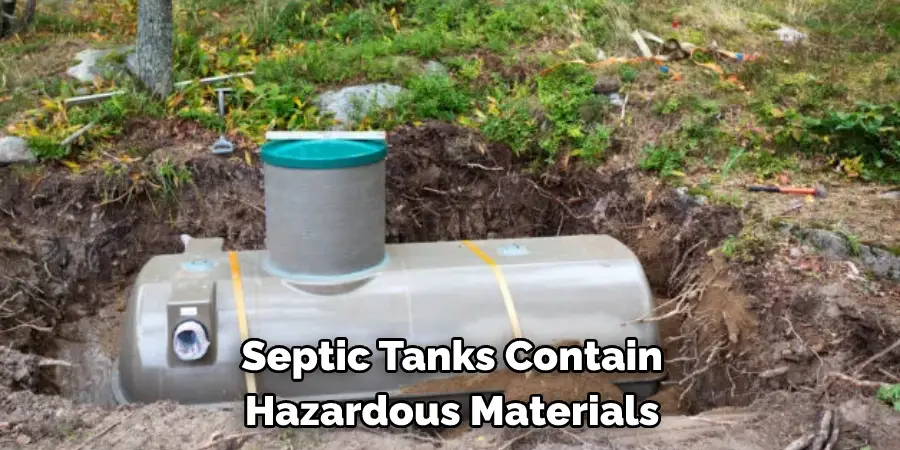
Hiding a septic tank lid also serves to protect small children and animals from potential harm. As septic tanks contain hazardous materials, it is important to keep them covered up in order to prevent anyone from coming into contact with the contents. By covering or hiding the lid, you can ensure that no one will inadvertently open the tank and become exposed to any harmful bacteria or gasses.
Conclusion
In conclusion, hiding a septic tank lid does not have to be a difficult task. With the right supplies, tools, and know-how, you can easily complete this task in no time at all. For more detailed guidance, consider seeking help from an experienced plumber.
Properly hiding your septic tank is essential for avoiding any unpleasant surprises down the road. Taking the time to hide your septic tank lid now will save you from dealing with any unpleasantness in the future. I hope reading this post has helped you learn how to hide a septic tank lid. Make sure the safety precautions are carried out in the order listed.

